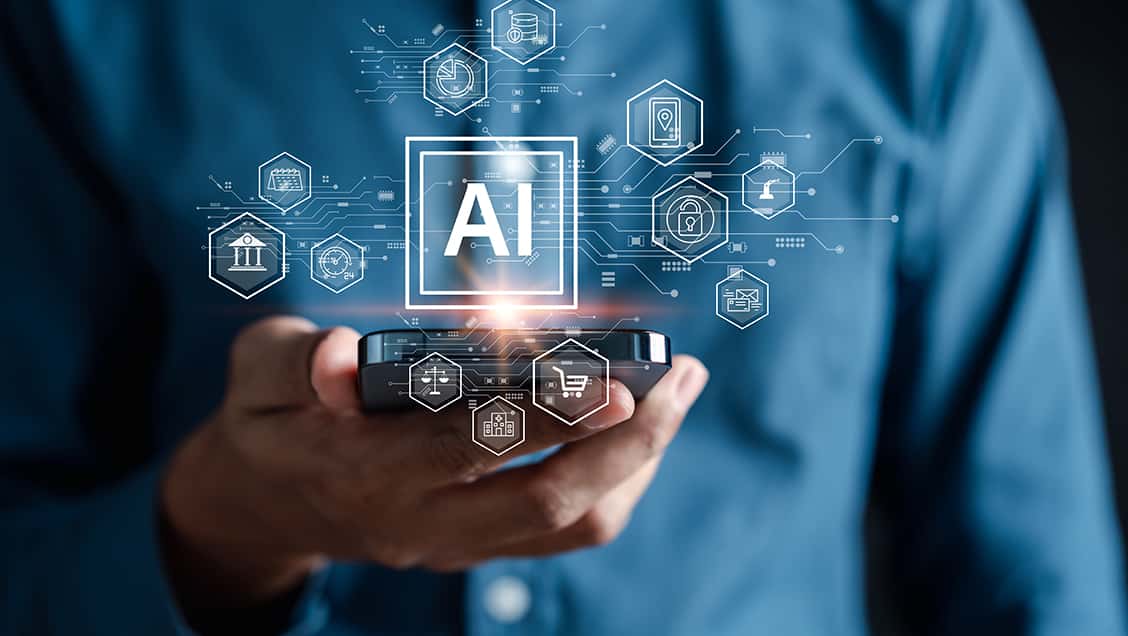The introduction of ChatGPT in November 2022 by OpenAI let the generative AI genie out of the bottle. But how exactly is GenAI—which can generate new things, as opposed to simply performing specific tasks—going to change our lives, at least in the foreseeable future?
A recent McKinsey report says that the new technology has the potential to improve on efficiencies that artificial intelligence is already delivering by taking on lower-value tasks, such as making basic queries and automating repetitive tasks. Patrick Wegner, senior capital markets analyst at Celent, says GenAI complements other forms of AI, analytics and automation, but that more-established AI models are better suited in certain use cases (e.g., machine learning, computer vision, speech recognition, robotic process automation and predictive models).
While GenAI has the potential to save money and improve worker productivity with large language models helping to automate tasks from coding to generating marketing products, it’s important to assess whether the boost to performance is great enough to justify the additional cost, Wegner warns. The latest and greatest variety of AI may not be the best suited to your firm’s needs.
“Create a sandbox of ideas: a safe environment to evaluate use cases,” Wegner suggests. “This provides structure, especially when it comes to different types of AI models or different use cases, and is useful from a cost/benefit analysis standpoint.”
Banks are examining how they’re going to tackle continued growth, both in terms of transaction volumes and thereby data. With the way the market is shaping up, transactions are getting richer in terms of details, says Vikram Gupta, group vice president of banking development at Oracle Financial Services.
“Key to this is the charting path for their digitization that puts AI to work,” he argues. Next year, Oracle predicts the unveiling of business-ready GenAI use cases that “enhance the overall banking experience with personalized customer engagement, better insights that support decision making at the point and time of need, and the streamlining and automation of complex processes at an enterprisewide scale.” GenAI functionality will be embedded in banking software and solutions, he predicts, “with direct access to relevant datasets, enabling more efficient leverage of large language models.”
GenAI and other varieties will also play a bigger role in fighting fraud and other financial crime. “We’ll see more use cases of machine learning to support banks with identity and name analysis,” Gupta says. “This will automate the removal of significant amounts of noise in banks’ systems to help them identify bad actors faster.”
Which banks are moving the fastest on this front? In November, Evident AI Index, which ranks AI talent, innovation, leadership, transparency and outcomes, ranked JPMorgan Chase first for the second year in a row, while other North American banks—Capital One, RBC, Wells Fargo, Goldman Sachs and Citi—filled five more of the Top 10 slots.
“AI is likely to be a core component of many parts of the financial services landscape,” predicts Prag Sharma, global head of Citi’s AI Center of Excellence, “including areas such as client engagement, operational enablement, and risks and controls.” Sharma counsels banks to experiment with AI, including GenAI, in a controlled manner to understand how the technology can help their organization-based on such factors as their existing infrastructure, knowledge base and expected outcomes.
“In order to assess the outcomes,” Sharma contends, “both qualitative and quantitative metrics should be developed and monitored on a use-case basis.”
Building an optimal ecosystem for developing AI capabilities is not simple, Sharma says: “These include open and discoverable data, modern infrastructure that can accommodate the demands of newer AI technologies, and knowledge about how to utilize AI models, as well as the risks and limitations of the technology.”
Integrating AI With Your Organization
Finastra recently redid its entire governance policy around GenAI to include validating information, protecting restricted data and avoiding content that infringes on intellectual property rights. To harness the power of GenAI, Adam Lieberman, head of AI and Machine Learning, says Finastra’s focus includes employees, developers, clients and enterprise technology.
“We rolled out the secure zone,” he says, “a state-of-the-art, holistic data environment that gives our teams the tools and resources to develop GenAI models. Everything is locked down and secure, so they can access a selected integrated set of generative models that retain commercial licenses, and we have virtual machines behind the scenes that they can spin up.”
“Financial institutions will also need to pay special attention to the architecture and design of their tech stacks,” says Gupta.
“Cloud-native solutions, coupled with deployment flexibility, will be key to operating at speed and scale,” he advises. “Implementing software-as-a-service [SaaS] applications will give banks access to composable solutions that will allow them to tap into continuous innovation with AI.”
On the data side, the implementation of ISO20022, the internationally accepted data-rich messaging standard, will facilitate easier access to vast amounts of data for banks, says Gupta, unlocking even more potential uses for AI and GenAI.
The cloud and AI lie at the heart of IBM’s Connected Trade Platform. Ravesh Lala, head of business development for IBM’s Hybrid Cloud Solutions, says the platform can help integrate the broader trade ecosystem via watsonx.ai, where developers can train, validate and fine-tune AI trading models; watsonx.governance, an AI governance toolkit facilitating trusted AI workflows; and watsonx Orchestrate, for automating back-office transactions using digital labor. Explainable AI can transform workflows and provide cross-border assurance, he argues.
“It’s easy for human beings to forget, but machines don’t forget,” says Lala. Evidence associated with a transaction ID suggests that “if you get audited, you can come back and explain a transaction based on the intelligence and data you had at that point in time.”
SmartStream’s solutions are used by banks, asset managers, hedge funds, brokers, custodians, corporate treasury and payment service providers. Yogesh Shenai, product manager for SmartStream, says many of the fintech’s clients use its SaaS and on-demand offerings, putting it in a unique position to analyze a problem outside silos and across the entire transaction lifecycle.
However, “after many years working with clients, it is important to note that AI is not always fit for every problem statement,” he warns. “We feel it has to offer a repeatable value proposition. Once we identify the use cases, we engage with our clients for extensive proof of concept and surveys with broader market participants.”
Risk management, compliance, automation and straight-through processing will continue to be the priorities in AI this year, Shenai predicts, although complex initiatives like T+1 transactions settlement, will require intermediaries such as custodians to modernize their processing. In this, AI will play a significant role.
“Having the ability to predict potential delays throughout the post-trade processing lifecycle will help counterparties act swiftly and avoid settlement failures,” he says.
Finding The Right Fit
Not every institution is ready to move to the cutting edge, however, Wegner cautions. While banks have a lot of data at their disposal, he says. it’s not necessarily well structured or accessible.
“We have found that many institutions require work on structuring their data for training before they can use AI effectively,” he notes. “There’s a very low signal-to-noise ratio in a lot of financial data.”
That means the impact we see from AI isn’t likely to be the one we expect, says Andy Schmidt, vice president and global industry lead for banking at CGI.
“Although financial services firms have petabytes of data,” he notes, “these firms have challenges with data quality and governance, and typically lack strategies for leveraging the data beyond supporting specific areas of the enterprise.”
The good news is that as institutions improve the quality of their data and apply AI to it, costs can be expected to go down. AI, according to Wegner, requires two things: “One is a lot of good data, the second is computing power to train the models, which you might not need later on. Once you have the ability to scale, you can reduce computing power usage—and that’s where the cloud element comes in.”




